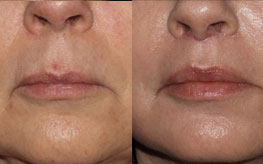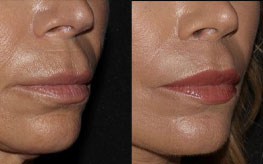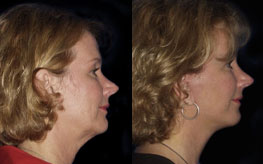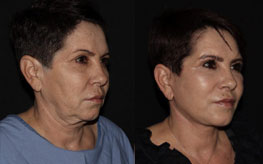Arm Lift
Conveniently located to serve the areas of San Diego, CA

Also known as brachioplasty (BRAKE ee oh PLAS tee), an arm lift reshapes and tightens the under portion of the upper arm, from the underarm region to the elbow.
Fluctuations in weight, growing older and even heredity can cause your upper arms to have a drooping, sagging appearance. Exercise may strengthen and improve the underlying muscle tone of the upper arm, but it cannot address excess skin that has lost elasticity or underlying weakened tissues and localized fat deposits. No amount of arm exercising can reduce redundant skin.
If the underside of your upper arms are sagging or appear loose and full due to excess skin and fat, an arm lift may be right for you.
For more information about our arm lift procedure, please contact us online or call us at 888-463-9532. We look forward to helping you look your best.
Contents
Before and After Photos
Understanding the Arm Lift Procedure
An arm lift is a surgical procedure that reshapes the under portion of the upper arm, from the underarm region to the elbow. The procedure is performed to:
- Reduce excess skin and fat between the underarm and the elbow
- Reshape your arm to result in smoother skin and contours
- Create a more toned and proportionate appearance
In order to achieve your improved image, there will be a scar on the inside of your upper arm.
Before You Decide
The Consultation
To ensure the most natural looking results, Dr. Alexander and Dr. Kaplan will recommend the procedure which most appropriately matches your needs and to offer realistic expectations for post-surgery outcomes.
Because an arm lift requires a long incision, Dr. Alexander and Dr. Kaplan may discourage you from having the procedure if your skin laxity does not seem excessive enough to warrant the resulting scar. It is usually not possible to perform a good arm lift with a hidden incision up under the armpit, because not enough skin can be removed.
The success and safety of your arm lift depends very much on your being completely candid during your consultation. We will ask you questions about your health, desires and lifestyle.
Be prepared to discuss:
- Why you want an arm lift, your expectations and desired outcome
- Medical conditions, drug allergies and medical treatments
- Use of current medications, vitamins, herbal supplements, alcohol, tobacco and drugs
- Previous surgeries
We may also:
- Evaluate your general health status and any pre-existing health conditions or risk factors
- Examine your arms, and take note of your skin quality
- Take photographs for your medical record or for computer imaging
- Discuss your options and recommend a course of treatment
- Discuss likely outcomes of an arm lift and any risks or potential complications
- Discuss the use of anesthesia during your procedure
Questions to Ask
- Were you trained specifically in the field of plastic surgery?
- Do you have hospital privileges to perform this procedure?
- Is the office-based surgical facility accredited by a nationally or state-recognized accrediting agency?
- How many procedures of this type have you performed?
- Am I a good candidate for this procedure?
- What will be expected of me to get the best results?
- Where and how will you perform my procedure?
- What shape, size, surface texturing, incision site and placement site are recommended for me?
- How long of a recovery period can I expect, and what kind of help will I need during my recovery?
- What are the risks and complications associated with my procedure?
- How are complications handled?
- What are my options if I am dissatisfied with the outcome of my ear surgery?
- Do you have before-and-after photos I can look at for each procedure and what are reasonable results?
Who is a good candidate?
In general, candidates for an arm lift include:
- Those with significant upper arm skin laxity
- Individuals who have lost significant weight
- Those with stable weight and are not significantly overweight
- Healthy individuals who do not have medical conditions that can impair healing or increase risk of surgery
- Non-smokers
- Individuals with a positive outlook and realistic expectations
What does it cost?
A quote will be provided to you after your consult with Dr. Alexander and Dr. Kaplan. Cost is always a consideration in elective surgery. We offer patient financing plans, so be sure to ask.
Costs include:
- Surgeon’s fee
- Operating room and supplies
- Prescriptions for medication
- Medical tests
- Anesthesia fees
Most health insurance plans will not cover arm lift surgery. When choosing a plastic surgeon for arm lift surgery, remember that the surgeon’s experience and your comfort are just as important as the final cost of the surgery.
To learn more about our partner in payment plans, please visit CareCredit.
The Arm Lift Procedure
Prior to surgery, we will have you:
- Take certain medications or adjust your current medications
- Avoid taking aspirin, anti-inflammatory drugs and herbal supplements as they can increase bleeding
- Stop smoking well in advance of surgery
During a preoperative appointment, usually 1-2 weeks before surgery, we will:
- Get lab testing or a medical evaluation
- Tell you what to do on the night before and morning of surgery
- Discuss the use of anesthesia during your procedure
- Explain post-operative care and follow-up, and what help you will need after the procedure
Anesthesia
Medications are administered for your comfort during the surgical procedure. An anesthesiologist will administer general anesthesia, which is recommended for this procedure. Smaller lifts can be done with IV sedation.
How We Do It: Tutorial
Achieving excellent results with an arm lift requires the surgeon to have significant skill and experience. The appropriate technique for you will be determined based on:
- Arm size and shape
- Skin quality and elasticity as well as the amount of extra skin
- The degree of arm sagging
The procedure typically takes 1.5-2 hours depending on the individual and certain surgical variables.
There are four basic steps to an arm lift.
Step 1 – Marking
While you are standing, Dr. Alexander and Dr. Kaplan makes careful measurements and markings on the arms. This is arguably the most important part of the procedure, and requires skill, patience, experience, and a good eye for symmetry and detail so that the incisions will be precisely placed.
Step 2 – The incisions
Incision length and pattern depend on the amount and location of excess skin to be removed. Incisions are generally placed on the inside-back of the arm, and may extend from the underarm (axilla) to just above the elbow. If fat is to be reduced during your arm lift, it will either be excised directly with the skin or removed with liposuction. Depending on your specific conditions, incisions may be more limited.
Step 3 – Removing excess tissue
Excess fat and skin is removed, all the way down to the muscle. Then, underlying supportive tissue is tightened and reshaped with internal sutures.
Step 4 – Closing the incisions
The skin is smoothed over the new contour of your arm. Your incisions will be closed with absorbable sutures, and stitches that will be removed within 1-2 weeks following your arm lift. Incision lines are permanent, but in most cases will fade and significantly improve over time.
Informed Consent
Pain from an arm lift varies but is usually mild. Patients are given pain pills to alleviate the discomfort, but usually only need them for a few days.
The decision to have arm lift surgery is extremely personal and you’ll have to decide if the benefits will achieve your goals and if the risks and potential complications are acceptable.
We will explain in detail the risks associated with surgery. You will be asked to sign consent forms to ensure that you fully understand the procedure you will undergo and any risks and potential complications. The risks include:
- Unfavorable scarring
- Bleeding (hematoma)
- Infection
- Fluid accumulation
- Poor wound healing
- Skin loss
- Asymmetry
- Numbness or other changes in skin sensation
- Pain, which may persist
- Skin discoloration and/or prolonged swelling
- Possibility of revisional surgery
- Anesthesia risks
Important Terms to Know
Anesthesia—General: The patient is asleep, requiring that the airway be protected, either by a standard breathing tube, or by a laryngeal mask (LMA), an inflatable mask that goes in the back of the throat but doesn’t go down the trachea. Through the airway, an anesthesiologist gives gases to put the patient asleep. Drugs may also be given through the IV.
Anesthesia—Local: The surgical area is numbed up with an injection, but the patient is awake. Sometimes a patient will be given an oral medication, like Valium, to help with relaxation.
Anesthesia— Sedation (Twilight): The patient is made sleepy with medications given through an IV. The level of sedation can be adjusted, from barely sleepy to very sleepy. Sometimes sedation is given by the surgeon, but most of the time it is administered by an M.D. Anesthesiologist.
Arm Lift: A surgical procedure, also known as brachioplasty, to correct sagging of the upper arms.
Axilla: The underarm area.
Brachioplasty (BRAKE ee oh PLAS tee): A surgical procedure, also known as arm lift, to correct sagging of upper arms.
Excision: To remove the skin.
Hematoma: Blood pooling beneath the skin.
Liposuction: Also called lipoplasty or suction lipectomy, this procedure vacuums out fat from beneath the skin’s surface to reduce fullness.
Skin Laxity: Degree of loose skin.
Sutures: Stitches used to hold skin and tissue together.
Recovery
You will need someone to drive you to and from surgery and to stay with you for at least the first night following surgery. If you experience shortness of breath, chest pains, or unusual heartbeats, you should call Dr. Alexander and Dr. Kaplan immediately.
The Specifics
After your procedure is completed, we will wrap your arms with a snug bandage. This may feel increasingly tight during the night because of swelling, but we will loosen it the next day. Usually you will remain wrapped for 48 hours, after which you can remove the wrap, take a cool shower, and place a soft wrap for support.
You will likely need a recovery period of 24 to 48 hours and an additional reduced-activity period of a few days. We begin removing sutures on the 3rd day. All sutures are removed by 10-14 days. You will experience soreness and swelling for a few weeks. Exercise and normal activity can resume at approximately 2-3 weeks. Over time, post-surgical swelling will decrease and incision lines will fade.
Following our instructions is key to the success of your surgery. It is important that the surgical incisions are not subjected to excessive force, abrasion, or motion during the time of healing.
Results
The smoother, tighter contours that result from your arm lift are apparent almost immediately following your procedure, although initial results will be somewhat obscured by swelling and bruising. Your new, shapely and toned upper arm is dramatically improved both in appearance and feel.
The results of your arm lift surgery will be long lasting. Incision lines are permanent, but will continue to fade over time. If you avoided sleeveless clothing prior to surgery, there is a much better chance that you will feel comfortable wearing such clothing after the procedure. Like most patients who have had an arm lift, you may also have a boost in self-confidence.
Over time, your arms can continue to change due to aging and gravity. But, you’ll be able to retain your new look longer if you maintain your weight and keep a healthy lifestyle. As your body ages, it is natural to lose some firmness, but most of your improvement should be relatively permanent.
Nearly all of our patients are thrilled with the results of their arm lift. The practice of medicine and surgery is not an exact science. Although good results are expected, there is no guarantee. In some situations, it may not be possible to achieve optimal results with a single surgical procedure and another surgery may be necessary.







